Dr. Suraj Achar MD - 5-Minute Sports Medicine Consult
Here you can read online Dr. Suraj Achar MD - 5-Minute Sports Medicine Consult full text of the book (entire story) in english for free. Download pdf and epub, get meaning, cover and reviews about this ebook. year: 2019, publisher: Lippincott Williams and Wilkins, genre: Home and family. Description of the work, (preface) as well as reviews are available. Best literature library LitArk.com created for fans of good reading and offers a wide selection of genres:
Romance novel
Science fiction
Adventure
Detective
Science
History
Home and family
Prose
Art
Politics
Computer
Non-fiction
Religion
Business
Children
Humor
Choose a favorite category and find really read worthwhile books. Enjoy immersion in the world of imagination, feel the emotions of the characters or learn something new for yourself, make an fascinating discovery.
- Book:5-Minute Sports Medicine Consult
- Author:
- Publisher:Lippincott Williams and Wilkins
- Genre:
- Year:2019
- Rating:4 / 5
- Favourites:Add to favourites
- Your mark:
5-Minute Sports Medicine Consult: summary, description and annotation
We offer to read an annotation, description, summary or preface (depends on what the author of the book "5-Minute Sports Medicine Consult" wrote himself). If you haven't found the necessary information about the book — write in the comments, we will try to find it.
- Get quick access to all-new content , including Ankle Impingement, Femero-acetabular Impingement, Myositis Ossificans, and Vocal Cord Dysfunction, in print and online.
- Find the answers you need quickly thanks to an intuitive, at-a-glance format, with concise, bulleted text; return-to-play and secondary prevention information; and much more.
- Make confident decisions aided by current evidence-based designations in each topic.
- Consult useful appendices for quick answers on musculoskeletal radiography and joint and soft tissue injection.
- A thoroughly updated and expanded appendix on Office Rehabilitation
- More than 1,500 additional topics, including the full contents of The 5-Minute Clinical Consult and The 5-Minute Pediatric Consult
- Differential diagnosis support from an extensive collection of algorithms
- Current evidence-based designations highlighted in each topic
- Thousands of images to help support visual diagnosis of all conditions
- A video library of procedures, treatment, and physical therapy techniques
- An A-to-Z Drug Database from Facts & Comparisons
- Guidance on laboratory test interpretation from Wallachs Interpretation of Diagnostic Tests
- More than 3,000 patient handouts in English and Spanish
- Approximately 100 Diseases and Conditions in Spanish
- FREE point-of-care CME and CE: 0.5 credits each time you search the site to find the best treatment for your patients. This activity has been reviewed and is acceptable for up to 20 prescribed credits by the AAFP and the ANCC.
Dr. Suraj Achar MD: author's other books
Who wrote 5-Minute Sports Medicine Consult? Find out the surname, the name of the author of the book and a list of all author's works by series.

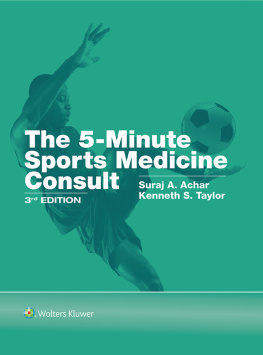

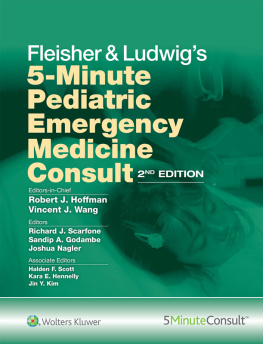
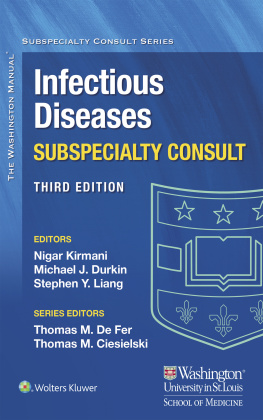
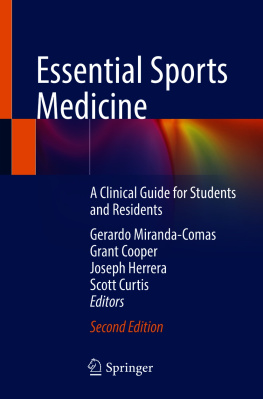
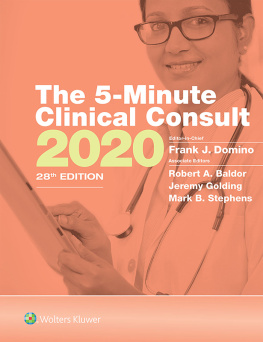



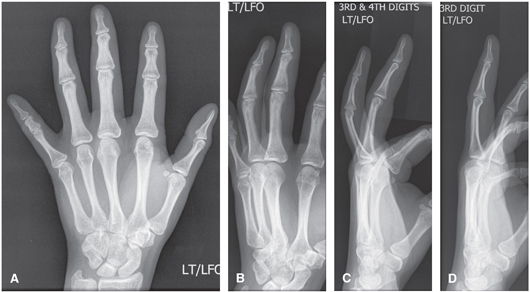 FIGURE 1. A: PA hand. B: Oblique of fingers. C, D: Lateral of fingers.
FIGURE 1. A: PA hand. B: Oblique of fingers. C, D: Lateral of fingers.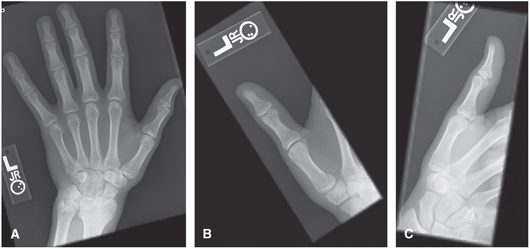 FIGURE 2. A: PA hand. B: PA thumb. C: Lateral thumb. HAND Routine This includes an off-axis view of the wrist but should not be used to assess wrist alignment. Good overview for hand pain.
FIGURE 2. A: PA hand. B: PA thumb. C: Lateral thumb. HAND Routine This includes an off-axis view of the wrist but should not be used to assess wrist alignment. Good overview for hand pain. FIGURE 3. A: PA of hand. B: Oblique of hand.
FIGURE 3. A: PA of hand. B: Oblique of hand.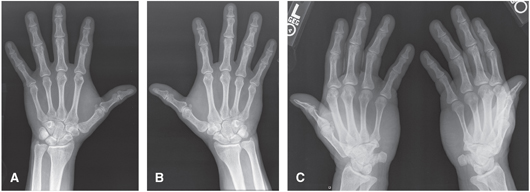 FIGURE 4. A, B: PA of each hand.
FIGURE 4. A, B: PA of each hand.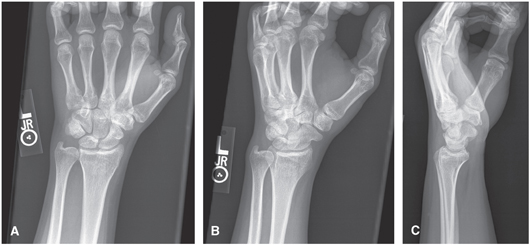 FIGURE 5. A: PA wrist. B: Ulnar oblique wrist. C: Lateral wrist. Trauma Additional scaphoid views include oblique and ulnar deviation with cranial angulation.
FIGURE 5. A: PA wrist. B: Ulnar oblique wrist. C: Lateral wrist. Trauma Additional scaphoid views include oblique and ulnar deviation with cranial angulation. FIGURE 6. A: PA wrist. B: Ulnar oblique wrist.
FIGURE 6. A: PA wrist. B: Ulnar oblique wrist.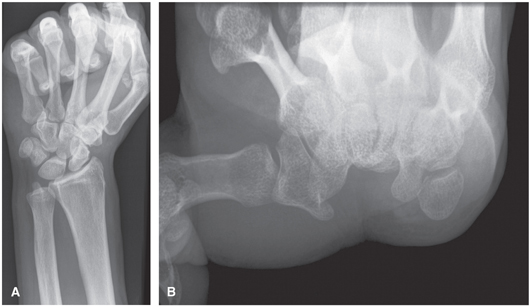 FIGURE 7. A: Clenched fist. B: Carpal tunnel views. FOREARM Good for trauma, mass, foreign body, cellulitis/osteomyelitis, or abscess.
FIGURE 7. A: Clenched fist. B: Carpal tunnel views. FOREARM Good for trauma, mass, foreign body, cellulitis/osteomyelitis, or abscess.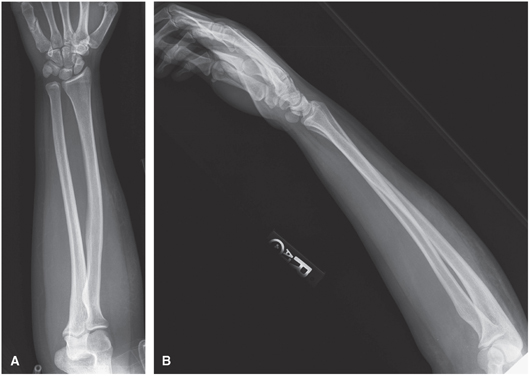 FIGURE 8. A: AP forearm. B: Lateral forearm. ELBOW Nontrauma Chronic injuries, arthritis, foreign bodies, and infection.
FIGURE 8. A: AP forearm. B: Lateral forearm. ELBOW Nontrauma Chronic injuries, arthritis, foreign bodies, and infection.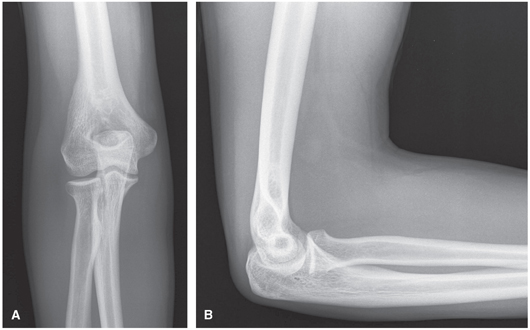 FIGURE 9. A: AP elbow. B: Lateral elbow.
FIGURE 9. A: AP elbow. B: Lateral elbow.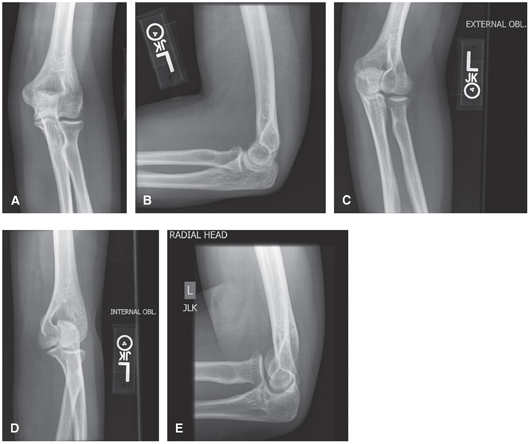 FIGURE 10. A: AP. B: Lateral.
FIGURE 10. A: AP. B: Lateral.